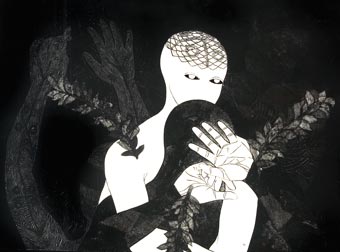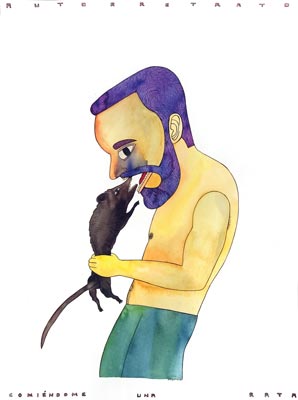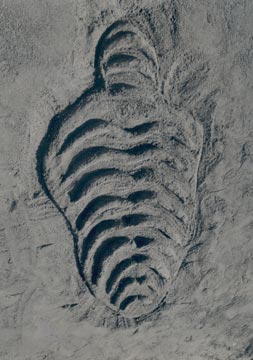Q & A with Howard Farber
Usually, the act of collecting is associated with a high level of personal wealth. Is that the case for you?
It had nothing to do with personal wealth at all. My background was middle class, and I actually started collecting with a few thousand us dollars. Years later, when I had a successful business, I also felt secure in my collecting. I would say that in those years, I spent more than I made on art collecting.
The early 1970s, when you started to collect, was an era of outstanding gallery dealers such as Leo Castelli, and big-name Pop artists such as Andy Warhol, Robert Rauschenberg, and Jasper Johns. But you collected American Modernist art of the early 20th century: pioneers such as Alfred Stieglitz, Marsden Hartley, John Marin, and Georgia O’Keeffe. Is it possible for a collector to act as an advance agent, creating awareness for under-recognized art? Or is the collector a sort of Indiana Jones, a discoverer of unknown art territories? On some level, is that the way you think of yourself?
It was quite by chance that I started to collect American Modernist works. I had no formal art training or education in the arts. I was aware of all the famous Pop artists of the day, but did not feel any strong attachment to what they were creating. I liked it, but I felt that was “the thing,” the trendy work, to collect in those times.
Only by chance did I enter an auction at Sotheby’s that was selling works from the estate of Edith Halpert, a pioneer woman gallery owner in New York. She had represented the American Modernists. I would like to consider myself like Indiana Jones. But I’m not that handsome. However, I do like to go where other collectors have not gone. I like the view of the lead horse. Think of it this way: the viewpoint of any other horse but the leader is not pretty.
You started to buy contemporary Chinese art in 1995. At that moment, there were few Western scholars and fewer books in English focused on the contemporary art of the red giant. What was the Chinese art landscape like at that time?
In 1995 there was no market at all for Chinese contemporary art. In China, artists were regularly being arrested for acts against the state, and the art market was very much underground. The only serious collectors were a handful of foreign diplomats. There was no gallery system in place. It was like the Wild West.
Why collect contemporary Chinese art? What did you see in it that you didn’t see in contemporary art of Europe or the U.S.?
By 1995, my collection of American Modernist works became very valuable. Pieces that I had paid $5,000 for was now worth $500,000. The art that I had struggled to buy and pay for was now worth a small fortune. But that meant that I could no longer afford to buy American Modernist art.
Being a collector is a little like being a drug addict, needing his fix. You need the fun of the chase and the excitement of the acquisition. You need it in your life. So once again by accident, on a pleasure trip to Hong Kong with my wife Patricia, I walked into a gallery and saw my first examples of Chinese contemporary art. I loved the works. I also realized a bit later on that the Chinese artists of the 1990s were going through the same social, economic, and political issues that the American Modernist artists were going through in the first few decades of the 20th century. It seemed a perfect fit for me. I truly loved the images. I had no idea Chinese artists were creating works like that. I had also become bored with the contemporary art scene in the U.S. and Europe. Chinese contemporary art was a new challenge for me.
 What are the risks or dangers involved in the sudden boom in a local market, as happened in China?
What are the risks or dangers involved in the sudden boom in a local market, as happened in China?
The dangers of an overheated market are probably the same the world over. People are really all the same-artists want the same thing for themselves and their families. In China, the artists suddenly became like rock stars, with all the trappings that come with it. Creativity starts to fade, and it becomes only a business. Many of the Chinese artists who I originally bought from fifteen years ago are now superstars in their own country, their personalities have changed, and I think their art has suffered.
For several years now, you’ve been known for your interest and enthusiasm for Cuban contemporary art. Have you once again entered into an obscure, little-noticed art market?
I originally discovered Cuban art in 2002, when my wife and I came to Cuba on a tour with the Metropolitan Museum of Art. I didn’t buy any art during that trip, since I was totally involved with Chinese art and really there to visit the Cuban National Ballet with my wife. That all changed after I returned to New York, with one email from Abelardo Mena, a curator at the Museo de Bellas Artes in Havana. He asked if I could send him images of Chinese contemporary artworks. An ongoing email exchange started, and a month later I asked him if he could get me the email address of an artist in Havana, since I wanted to buy a drawing. One drawing.
Well, that one drawing unleashed a tidal wave of interest. Abelardo Mena has been my curator, teacher, friend, confidant and psychiatrist for about 10 years. I would say that, more than any other factor, he is the one responsible for my interest in Cuban contemporary art.
Cuba is so close, geographically, to the U.S. But Cuban art is so little known there. Why is that?
The biggest reason for this is politics. I don’t want to talk like a politician, but both Cuba and the United States hopefully will get their respective acts together and come into the 21st century.
 You started collecting Cuban drawings but soon started buying oil paintings, sculpture, and installations. What suggestions do you have to beginning collectors?
You started collecting Cuban drawings but soon started buying oil paintings, sculpture, and installations. What suggestions do you have to beginning collectors?
Always buy the best work you can for the amount of money you have to spend.
This is an age-old problem for collectors. First, set a budget. . . and then figure out how much more than that you will spend. I personally like to get my feet wet with a drawing to start. A great drawing is still a great work. All beginning collectors make what I call “rookie” mistakes. At least if you start slow, you will not make a terribly costly mistake. When you feel comfortable, and with the help of a curator or gallery owner, then you can “go for it.”
As a collector, your eye was accustomed to American Modernist art, then contemporary Chinese art, and now contemporary Cuban. How can a collector enter into or understand such diverse aesthetic sensibilities?
They are all different niches, but a collector’s eye has to be flexible. A collector must understand the historical perspective of the art.
Are you helped by books, or are you a “hunch” collector?
I do a tremendous amount of reading. I also have “gut” reactions to things. For example, when I was exposed to important works of Cuban contemporary art, I realized that Cuban contemporary art is probably the best-kept secret in the international art market.
Many collectors, especially Americans, come to Havana to make mass purchases. You, on the contrary, could be characterized as a holistic collector –someone who made very specific purchases after a long process of discussion with your curator.
When people ask me how many paintings do you have, I usually ask them why? Does it matter? When I eventually sold my American Modernist art, I had eight paintings. But they were eight gems. All of them, I’m pleased to say, were acquired by museums. I have been to homes where the artworks are hung floor to ceiling, and I try to find a great work and usually can’t. Art is always about quality and not quantity.
And you always prefer the piece hidden away under the artist’s bed, covered with dust, rather than the new one, just produced and smelling of acrylic. Why?
I like the history of an artwork, the provenance. I like to have a wide range of art by the same artist. Great early paintings (perhaps from the artist’s student years at ISA, the Instituto Superior de Arte), up to the latest endeavors. I like knowing that my collection contains this type of “classic” works. By now, all the Cuban artists know that I usually start with older work first. Then I like to go to the present time. All collectors have different styles of collecting.
You have stated elsewhere that “the biggest problem I find is that there is no awareness of Cuban contemporary art internationally.” What steps do you recommend for Cuban art institutions to spread the knowledge of the Cuban art since the 19th century?
I believe that Cuban institutions have a great natural resource with their art. All types of art-fine art, photography, music, literature, food, etc. But as you said, it’s a hidden resource. The more literature, in Spanish and English, that could be published would help tremendously.
People know the names of the top artists like Warhol and Picasso, and they might know the images of certain Chinese contemporary artists. But Cuban contemporary art is in its infancy. It must be promoted to others internationally.
 After your interview in the magazine Art Nexus, The Farber collection took out an ad celebrating the 30th anniversary of Volume I exhibition, which took place in 1981. Why?
After your interview in the magazine Art Nexus, The Farber collection took out an ad celebrating the 30th anniversary of Volume I exhibition, which took place in 1981. Why?
Because I believe that the eleven named participants in that show are the real pioneers of Cuban contemporary art. Only a handful of people know them or their names. It might be different in Cuba, but in the United States, nobody knows how much they contributed to the Cuban art scene. Also, I would not be collecting art from Cuba today had it not be for those eleven artists. Personally, I feel that I owe them everything, and I wanted to congratulate them on their 30th anniversary of making art history.
Did you find any conceptual similarities between Chinese and Cuban contemporary art, especially considering that they are both produced in countries that are officially Communist?
I find that the earlier contemporary works in China as well as Cuba are very political, and that artists always like to give the government a quick jab in the stomach. However, as time goes on, the real value of the artist and his creativity comes through and many change styles are they grow as people and as artists. I feel that China now knows that one of its greatest cultural exports is its contemporary art. I have a feeling that the Cuban government is seeing that as well. We’ll see.
Your Cuban artworks have been circulating in museums across the U.S. Do you think it’s also the role of the collector to be a transnational bridge between cultures?
I feel that it is my duty and honor to share and educate with others what I appreciate. My Cuban collection has traveled though the U.S. and Canada and has just returned to me. I will now work on a new major museum show which would include my entire collection. I would love the premiere to be in Havana, and then New York. One venue in Cuba, two in the United States, and then six major cities in Europe, Asia, and South America. This will take me a very long time to put together, but I’ve already started the process.
You produced the first book about The Farber Collection, Cuba Avant-Garde, with the University of Florida Press, in 2006. Now, you’re immersed in a new sort of publication. Could you tell us about that?
I have acquired so many important works since the Cuba Avant-Garde show that I need to produce a new book, along with the new show. Because the exhibition will be limited to a handful of exclusive venues, I am creating a new website that will showcase all the works in The Farber Collection. The idea is that this will also help create awareness for Cuban contemporary art in general.
Last year, you and your wife Patricia created a private foundation, Fundación Cuba Avant-Garde, to support U.S. cultural institutions that are working to increase awareness of contemporary Cuban art and culture. The foundation’s first funding round closed in November. Tell us about the results.
It has been tremendously rewarding to begin working with the Fundación. We received 90 proposals from organizations around the U.S. Of these, six were selected for funding. We sent dancers from the New York City Ballet to the International Ballet Festival in Havana. We sent Arturo O’Farrill, a distinguished musician and composer, and the son of jazz great Chico O’Farrill, on a tour of Cuba with the Chico O’Farrill Cuban Jazz Orchestra. There’s a symposium on contemporary Cuban art, an artist residency for a Cuban artist at a liberal arts college in the northeastern U.S. We’re helping to fund a film about Cuban architecture. And we’re supporting a Cuban folkloric ballet company’s appearance in New York, at the Brooklyn Academy of Music. (For more details on the Fundación grantees, visit http://fundacioncag.org/article_first_round_grant_funding.html.)
Just a week ago, the Obama Administration lifted some restrictions on U.S. citizens traveling to Cuba, under cultural or religious permits. Do you think Obama is on the right track for improving U.S. relations with Cuba?
Obama certainly has a lot on his plate. Hopefully, he will be the one to cross the bridge with the Cuban government and change the lives of millions of people in both countries.
Related Publications

How Harumi Yamaguchi invented the modern woman in Japan
March 16, 2022












